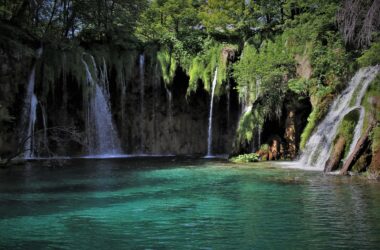Corcovado National Park is a protected area located on the Osa Peninsula in Costa Rica that is known for its high levels of biodiversity and stunning landscapes. The park is also a shining example of sustainability in action, with a strong focus on conservation, sustainable tourism practices, and community involvement.
Conservation Efforts in Corcovado National Park
Corcovado National Park is home to a wide variety of wildlife, including several endangered species such as the Baird’s tapir, the Central American squirrel monkey, and the harpy eagle. The park’s management has implemented several conservation initiatives to protect these and other species.
One such initiative is the establishment of ranger stations throughout the park. These stations help to deter illegal poaching and logging activities, and also serve as a base for park rangers to monitor the park’s wildlife and ecosystems.
Another important conservation effort is the park’s reforestation program. In the past, the Osa Peninsula was subject to significant deforestation, which resulted in habitat loss for many species. To combat this, the park has implemented a reforestation program that involves planting native tree species to restore degraded areas.
Community Involvement in Corcovado National Park
The success of Corcovado National Park’s sustainability efforts is due in part to the involvement of local communities. The park’s management works closely with local communities to ensure that they benefit from the park’s presence, and that their livelihoods are not negatively impacted by conservation efforts.
One way that the park supports local communities is by hiring local guides and staff. These individuals have a deep understanding of the park’s ecosystems and wildlife, and can provide valuable insights to visitors. They also benefit from employment opportunities that support their families and communities.
Certification Programs in Corcovado National Park
Several certification programs exist to ensure that tourism in Corcovado National Park is sustainable and responsible. One such program is the Certification for Sustainable Tourism (CST) program, which is run by the Costa Rican Tourism Board. This program assesses tourism businesses and awards them a rating based on their sustainability practices.
Many of the lodges and tour companies that operate in and around Corcovado National Park have received CST certification, which is a testament to their commitment to sustainable tourism practices. Visitors can support these efforts by choosing to stay at certified eco-friendly lodges and book tours with certified sustainable tour operators.
Sustainable Tourism Practices in Corcovado National Park
In addition to certification programs, Corcovado National Park has implemented several sustainable tourism practices to minimize the impact of tourism on the park’s delicate ecosystems. These practices include:
- Limiting the number of visitors to the park to ensure that the park’s ecosystems can handle the amount of foot traffic.
- Enforcing strict Leave No Trace principles to minimize the impact of visitors on the park’s natural environment.
- Providing education and interpretation programs to visitors to help them understand the importance of sustainability and conservation in the park.
- Encouraging visitors to use alternative forms of transportation, such as walking or cycling, to reduce their carbon footprint.
Challenges to Sustainability in Corcovado National Park
Despite the park’s strong commitment to sustainability, there are still several challenges that must be addressed to ensure that the park’s ecosystems and wildlife remain protected. These challenges include:
- Climate change: Climate change poses a significant threat to the park’s ecosystems and wildlife. Rising temperatures, changing precipitation patterns, and increased frequency of extreme weather events can all have a negative impact on the park’s delicate ecosystems.
- Illegal hunting and fishing: Despite the park’s conservation efforts, illegal hunting and fishing still occur within the park’s boundaries. This poses a threat to the park’s wildlife and ecosystems, and undermines the park’s conservation efforts.
- Overcrowding: Although the park limits the number of visitors, overcrowding can still occur to the park’s popular attractions, such as the beaches and hiking trails. This can result in erosion, habitat disturbance, and other negative impacts.
- To address these challenges, the park’s management is working on several initiatives, including:
- Developing adaptation strategies to address the impacts of climate change, such as increasing the park’s resilience to drought and other extreme weather events.
- Increasing the presence of park rangers and implementing stricter enforcement measures to deter illegal hunting and fishing activities.
- Developing alternative activities and attractions within the park to reduce overcrowding at popular locations.
Conclusion
Corcovado National Park is a shining example of sustainability in action. The park’s commitment to conservation, community involvement, certification programs, and sustainable tourism practices has resulted in a successful model of ecotourism that benefits both the environment and local communities.
However, the park still faces several challenges, including climate change, illegal hunting and fishing, and overcrowding. To ensure the park’s sustainability in the long term, it is important that these challenges are addressed and that the park continues to prioritize conservation and sustainability in its management practices.
Visitors to Corcovado National Park can play an important role in supporting sustainability efforts by choosing to stay at eco-friendly lodges, booking tours with certified sustainable tour operators, and following Leave No Trace principles while exploring the park’s natural wonders. By working together, we can ensure that Corcovado National Park remains a jewel of ecotourism and a testament to the power of sustainable practices.
Similar Articles










